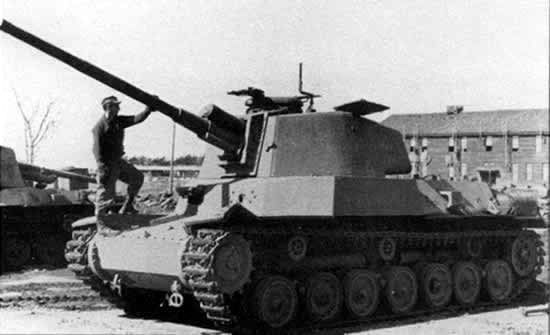
A project is under way to find a “phantom tank” at the bottom of Lake Hamana in Hamamatsu, Shizuoka Prefecture. The Imperial Japanese Army produced two Type 4 Chi-To medium-heavy tanks on a trial basis near the end of World War II, utilizing what was considered at the time cutting-edge technology.
But the vehicles never saw combat and instead were deep-sixed in the lake sometime between Aug. 23 and 28, 1945, to keep them out of the hands of the U.S. military. After the war, the U.S. Army pulled one of the tanks out of the lake but left the other one on the bottom. The 30-ton tank was approximately 6.3 meters long and 3 meters high and wide. The Imperial army wanted a class of tank bigger than most of its previous vehicles to compete with those of the United States and European countries, according to Kunihiro Suzuki, 54, president of Fine Molds, a company in Toyohashi, Aichi Prefecture, that produces plastic models of military hardware, including the Chi-To tank.
There are no known existing documents about the tank, even at the National Institute for Defense Studies, the Defense Ministry’s research arm that researches security issues and military history. If found, the tank at the bottom of Lake Hamana would be “highly valuable even in terms of industrial history,” Suzuki said.

The search for the tank started last November in an area about 18 meters deep near the Seto Bridge, which divides the northern part of the lake with the smaller Lake Inohana. Local residents and volunteers gathered with a sonar device and divers were brought in. In February, Windy Network Corp., a Tokyo-based marine survey company that found an Imperial Japanese Army training plane in Lake Towada on the border between Aomori and Akita prefectures in 2010, also joined the search.
The hunt so far has turned up nothing.

Δεν υπάρχουν σχόλια:
Δημοσίευση σχολίου